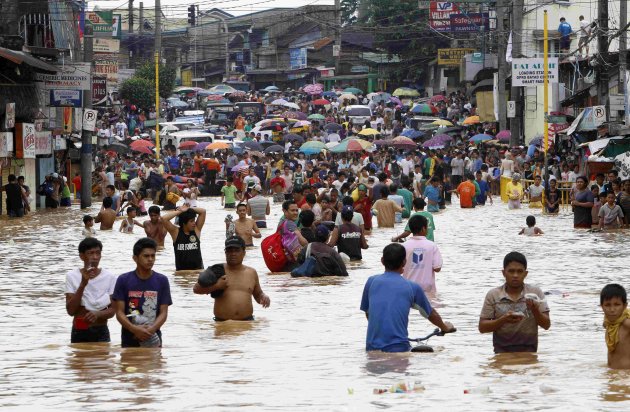 |
| source: reuters |
Last 2009, during typhoon 'Ondoy', a Leptospirosis outbreak occurred in the Philippines. With the same flooding situation now, the risk of an outbreak is highly possible.
Leptospira spp., is the causative bacteria of Leptospirosis. It is found in wide range of animals and are transmitted to humans through their urine (rats excrete higher concentration of bacteria). Transmission occurs through the ingestion of contaminated water, contact of open wounds or mucus membrane to urine/tissues of infected animals. And because most houses in the Philippines have rats (whether we like it or not), the disease is endemic in the Philippines and usually rises during typhoon seasons.
Signs and Symptoms:
- Phase 1 (Septicemic/ Leptospiremic Phase): Flu-like characteristics (headache, muscle pain, joint pain, cough, eye pain, nausea & vomiting, chills, and fever)
This may resolve within 4-9 days or more. But others may develop more serious symptoms that leads to the second stage.
- Phase 2 (Immune/Toxic Phase): stiffness of the neck, meningitis, liver damage (causes jaundice or yellowing of the skin), renal failure and other organ failure.
This may last for a week or a month. For severe conditions, death may occur in the 1st or 2nd week.
Preventive measures:
- Prophylaxis - the standard is 200mg Doxycycline for adults per week (not given to children d/t potential S/E)
- Avoid unnecessary wading/swimming in flood waters (use boots and other protective gears)
- Cover cuts and broken wounds with waterproof plasters.
- If possible, drink mineral/distilled water or boil the water.
- Rodent control and immunization of pets can minimize the risk of Leptospirosis.
- Always wash your hands after handling contaminated materials and before eating or drinking.
Your NOD,
PinayRN
Sources:













very helpful information sis.. Hope you and your family is safe during the Habagat times. ^_^
ReplyDelete@MARIA
ReplyDeleteThanks Sis! :) We are doing good with God's grace. God Bless!
Very interesting! Rainy season can bring about a lot of diseases and that include leptospirosis. my website
ReplyDelete